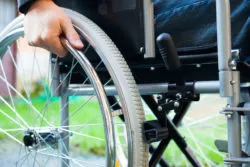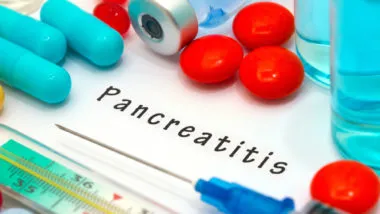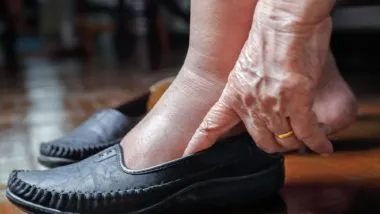
SGLT2 (sodium-glucose co-transporter 2) inhibitors are a class of drugs used to treat diabetes. Diabetes.co.uk notes that these drugs help to treat type-2 diabetes by helping the kidneys lower blood glucose levels.
These drugs help to lower blood glucose levels by preventing the kidneys from reabsorbing glucose into the blood. SGLT2 inhibitors block the protein that reabsorb glucose into the blood. When a patient takes an SGLT2 inhibitor, excess sugar in their blood is excreted in the urine.
Drugs in the class of SGLT2 inhibitors include Farxiga (dapagliflozin), Invokana (canagliflozin), and Jardiance (empagliflozin). Concern that SGLT2 inhibitors lead to diabetes amputations and other side effects have been a concern.
What are the side effects of SGLT2 inhibitors?
Because SGLT2 inhibitors cause excess sugar to be excreted in the urine, they can increase a patient’s risk for contracting genital and urinary tract infections. These infections are more common in women than in men. These infections can be dangerous and lead to further adverse effects if left untreated.
According to Healthline, these drugs have been linked to an increased risk of diabetic ketoacidosis, a condition in which a person’s blood sugar is too high, and substances called ketones build up to dangerous levels. Ketoacidosis is more common in patients with type-1 diabetes, but can occur in patients with type-2 diabetes, notes Healthline.
Diabetes.co.uk notes that in some SGLT2 inhibitor users who take the drugs with insulin, they may have an increased risk of hypoglycemia, a condition that can occur if a person’s blood sugar levels drop too low.
In addition to an increased risk of genital and urinary tract infections, diabetic ketoacidosis, and hypoglycemia, SGLT2 inhibitors have also been linked to serious side effects including gangrene and the need for amputations of the toes, feet, or lower limbs.
Can SGLT2 inhibitors cause amputations?
It has not been proven that SGLT2 inhibitors cause amputations. However, some research does suggest that taking an SGLT2 inhibitor can increase one’s risk of amputations.
WebMD says that a recent study indicated that diabetes patients on an SGLT2 inhibitor are twice as likely to require a leg or foot amputation as diabetes patients taking other diabetes medications.
Although its not certain why SGLT2 inhibitors cause amputations, two clinical trials – the CANVAS (Canagliflozin Cardiovascular Assessment Study) and CANVAS-R (A Study of the Effects of Canagliflozin on Renal Endpoints in Adult Participants With Type 2 Diabetes Mellitus) trials – revealed that lower limb amputations of the leg and foot occur around twice as often in patients treated with SGLT-2 inhibitors when compared to patients treated with a placebo.

Specifically, the CANVAS trial showed that 5.9 of every 1,000 patients treated with canagliflozin (Invokana, Invokamet, Invokamet XR) needed an amputation. In contrast, only 2.8 of every 1,000 placebo patients needed an amputation. Similar results were found in the CANVAS-R study, with 7.5 canagliflozin patients and 4.2 placebo patients needing an amputation for every 1,000 patients.
More recently, another study examined the risk of amputation with SGLT-2 inhibitors and aimed to quantify this risk. Researchers looked at outcomes of over 300,000 patients on canagliflozin or other diabetes medications. By analyzing these patients, researchers determined that there were 18 more amputations for every 10,000 patients in the canagliflozin group.
“The increase in rate of amputation with canagliflozin was small and most apparent on an absolute scale for adults aged 65 or older with baseline cardiovascular disease,” the researchers conclude. “These results help to contextualize the risk of amputation with canagliflozin in routine care.”
This is concerning because diabetes patients already have an elevated risk of amputation, and diabetes drugs aim to treat diabetes symptoms like the problems that could necessitate amputation.
Many people with diabetes suffer from poor circulation or diabetic foot ulcers due to their condition, which might increase the risk of experiencing an amputation. If a foot ulcer becomes infected, a diabetic patient’s poor healing rate may lead to the sore becoming infected. An infection which spreads in the body can quickly destroy tissue in the foot and leg – requiring an amputation to prevent the infection from running rampant.
According to studies on the possible link between SGLT2 inhibitors like Jardiance or Farxiga and an increased risk of amputation, patients are most likely to undergo amputation of their toes or foot. These studies have found that even when factors such as the BMI and smoking status of the patients were taken into account, these drugs were still associated with a higher risk of requiring amputation.
How might SGLT2 inhibitors cause amputations?
While it has not been proven that SGLT2 inhibitors cause amputations, one theory behind the connection is that the drugs cause dehydration, which decreases blood flow. This can allegedly decrease the body’s ability to heal and recover from infection. If a person cannot heal a wound or recover from infection in their leg or foot, that limb might have to be amputated.
Who may be at risk for an amputation?
Diabetes patients who are already at an elevated risk for amputation may be at elevated risk for an amputation connected to SGLT2 use.
Dr. Peter Ueda, postdoctoral researcher with Karolinska University Hospital in Stockholm, Sweden, who participated in the research exploring the connection between SGLT2 inhibitors and amputation, said, “Patients at high risk of amputation, for example, those with peripheral artery disease or foot ulcers, might be monitored more closely if SGLT2 inhibitors are used, and the risk of this adverse event may be considered when deciding on which drugs to use.”
Additionally, patients who have already undergone an amputation may be at an increased risk for requiring another one while taking SGLT2 inhibitors. Patients with pre-existing conditions including neuropathy or poor circulation may also face a higher risk of experiencing serious SGLT2 inhibitor side effects.
Victims who have suffered from dangerous side effects of SGLT2 inhibitors such as amputation may be able to recover compensation for their medical expenses, cost of medical care, pain and suffering, loss of income or earning capacity, and other damages.
ATTORNEY ADVERTISING
Top Class Actions is a Proud Member of the American Bar Association
LEGAL INFORMATION IS NOT LEGAL ADVICE
Top Class Actions Legal Statement
©2008 – 2025 Top Class Actions® LLC
Various Trademarks held by their respective owners
This website is not intended for viewing or usage by European Union citizens.
E-mail any problems with this form to:
[email protected].
Oops! We could not locate your form.












